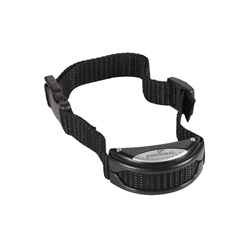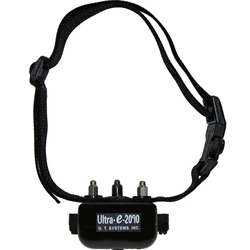Barking is a dog’s way of communicating, but when barking becomes excessive and is disturbing to both you and your neighbors, a bark collar combined with proper training can safely and effectively correct the problem. Before you begin trying to curtail your pet’s barking, dog experts recommend figuring out why your dog is barking so you can try to change the situation that inspires the dog to bark.
Why Dogs Bark
According to the Humane Society of the United States, there are several common triggers that make dogs bark excessively. They are:
- Attention/Demand — Wants to eat, go outside or get your undivided attention.
- Boredom/Frustration — Has been left outside day and night, or been crated or confined to one room all the time.
- Fear — Afraid of objects, people, places, other animals, or loud noises such as thunder and fireworks. (Note: Ears are typically back and tail held low.)
- Territorial/Protective — Barking in the presence of “intruders,” which may include people and other dogs in adjacent yards. (Note: Posture will appear threatening with tail held high and ears up and forward.)
- Play/Excitement — Barking while being playful and/or while greeting people.
- Health or Old Age — May have Canine Cognitive Dysfunction, be deaf and unable to hear himself bark, or have dementia.
Types of Safe Bark Collars
Patient training combined with a training aide, such as a bark collar, usually works well to discourage barking. There are several types of bark collars to choose from. Collar sizes vary and are based on a dog’s neck size and weight.
1) Spray Bark Collar
Sound-sensitive spray bark collars release a spray of harmless but bothersome citronella each time your dog barks. The mist surprises the dog and interrupts his pattern of barking. Over time, most dogs are gradually conditioned to stop nuisance barking. Some spray collars use both vibration and sound sensors to detect barking or have an advanced bark recognition technology so the collar will spray only when your dog barks.
 2) Ultrasonic Bark Collar
2) Ultrasonic Bark Collar
An ultrasonic bark collar deters barking by emitting a loud ultrasonic sound that only dogs can hear. The unpleasant, high-pitched noise startles the dog, disrupts his barking, and discourages him from continuing. Â Some models, like the Bark Control Soft by EYENIMAL, use both ultrasound and vibration. Â The ultrasound emits a harmless but annoying beep tone to distract the dog from barking and the vibration near the larynx helps to interrupt the barking.
3) Vibration Bark Collar
When your dog barks, a vibration bark collar interrupts him by emitting a harmless vibration from one or two probes. Some vibration bark collars also emit a beeping sound. Over time, most dogs will understand very quickly that the collar is disrupting their urge to bark and the dog will relax and stop barking.
 4) Static Bark Collar
4) Static Bark Collar
A static bark collar releases a safe and gentle static correction when your dog barks. Typically, the static correction is preceded by a warning beep to let the dog know that a correction is coming. Most static bark collars deliver increasing levels of stimulation if the barking continues. Because a static bark collar is activated by a vibration sensor that detects when a dog’s vocal chords are moving, they are not be affected by other dogs barking.
Summary
By combining the modern electronics of a bark collar and dog training modification techniques, you can train your dog to stop annoying barking. For more information on training techniques, read Barking: How to Get Your Dog to Quiet Down published by the Humane Society of the United States. If this is your first dog or your pet is difficult to manage, you may want to consider signing up for training classes with a professional.





